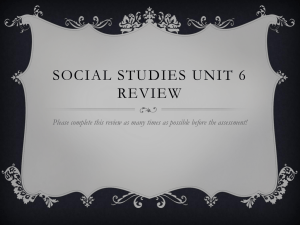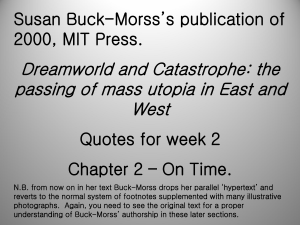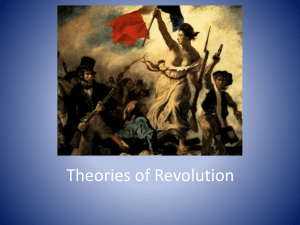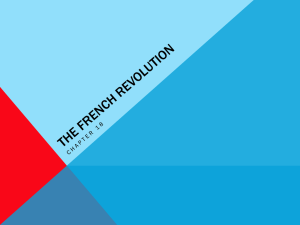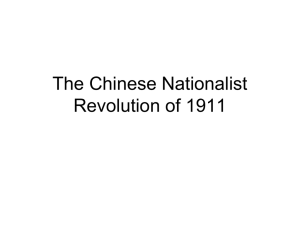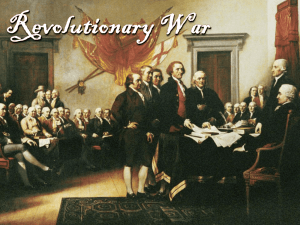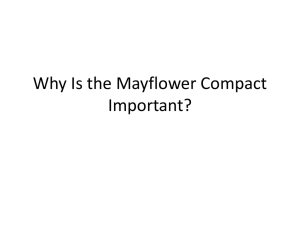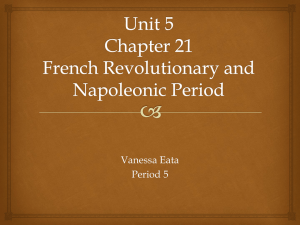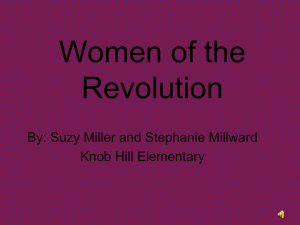FRENCH REVOLUTION - e-CTLT
advertisement
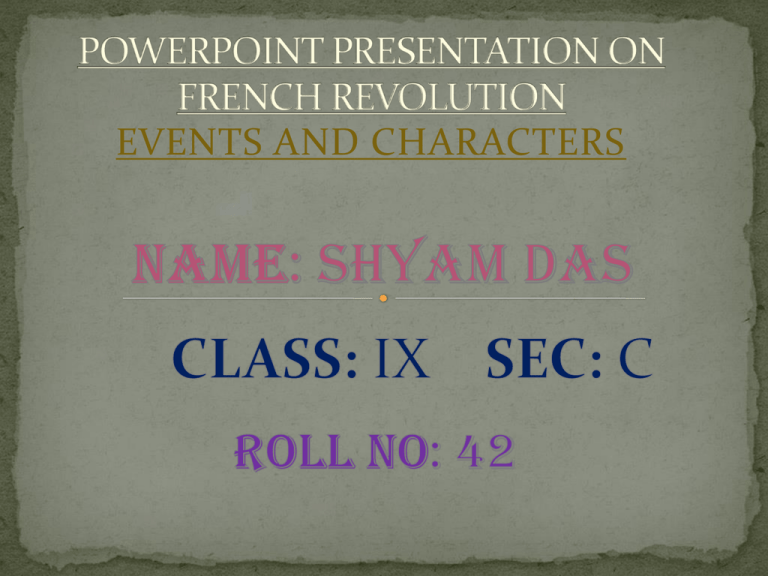
EVENTS AND CHARACTERS This cartoon from the era of the French Revolution depicts the third estate as a person in chains, who supports the clergy and nobility on his back Long-standing resentments against the monarchy Inequalities in society Existing social and political structure Called the Old Order, or ancient régime King at the top and estates under him King Louis XVI, shy and indecisive Unpopular, self-indulgent queen, Marie-Antoinette Rest of French society divided into three classes, called estates Ideas of liberty and equality from the American Revolution (note: Constitution was signed 2 yrs before in 1787) Enlightenment ideas of John Locke. Vast majority of people were broke and hungry. Vast majority were in the lowest estate. The part of the French Congress representing the third estate left and declared themselves THE congress of France. French created their own Declaration of the Rights of Man and Citizen modeled after TJ’s Declaration of Independence. The delegates argued the 578 delegates signed by it in the “TENNIS COURT OATH”. It said: The National Assembly, considering that it has been summoned to establish the constitution of the kingdom... decrees that all members of this assembly shall immediately take a solemn oath not to separate... until the constitution of the kingdom is established on firm foundations..." June 20, 1789 At the beginning of the revolution, the working men of Paris allowed the revolutionary bourgeoisie to lead them SANS-CULOTTES But by 1790 the sans-culottes were beginning to be politically active in their own right. They were called sans-culottes (literally, without trousers) because the working men wore loose trousers instead of the tight knee breeches of the nobility. Eventually sans culottes came to refer to any revolutionary citizen. When the constitutional monarchy fell and he King was put on trial for treason in December, the Girondins argued against his execution. The Jacobins thought he needed to die to ensure the safety of the revolution. When the Jacobins were successful the tide turned against the Girondins. The Jacobins in the National Convention had 22 Girondin leaders arrested and executed. The Jacobins had won. After the death of Louis in 1793, the Reign of Terror began. Marie Antoinette led a parade of prominent and not-so-prominent citizens to their deaths. The guillotine, the new instrument of egalitarian justice, was put to work. This new government was called The Directory. It was far more conservative than the Jacobin republic had been. It was also ineffectual. Even the radical Jacobins, the supporters of Robespierre, come to feel that the Terror must be stopped. Women’s March to Versailles: On October 4, 1789, a crowd of women, demanding bread for their families, marched toward Versailles. When they arrived, soaking wet from the rain, they demanded to see "the Baker," "the Baker's wife," and "the Baker's boy". The King met with some of the women and agreed to distribute all the bread in Versailles to the crowd. “Women are born free and equal in their rights....These rights are liberty, property, security and resistance to oppression. The fundamental source of all sovereignty resides in the nation. The law is the expression of the general will. All citizens have the right to take part personally, or through representatives, in the making of the law." On 4 February 1794, the First Republic (Convention) voted for the abolition of slavery in all French colonies. The abolition decree stated that "the Convention declares the slavery of the Blacks abolished in all the colonies; consequently, all men, irrespective of color, living in the colonies are French citizens and will enjoy all the rights provided by the Constitution.“ While Africans in America were still enduring the atrocities of slavery toward the end of the 18th century, the country of France was embroiled in a revolution that would yield a most-shocking result: on this day in 1794, a decree was put forth that called for the abolishment of slavery. Independent revolutionary agitation in the countryside Rumors of Royalist troops becoming wandering vandals Fear breeds fear and peasants start marching Within 3 weeks of July 14, the countryside of France had been completely changed Abolition of the Nobility Revolutionary Talk --More than 500 new newspapers --Oath of Loyalty -- “Liberty, Equality, Fraternity!” Revolutionary Symbols Revolutionary Clubs --The Jacobins Revolutionary Leaders A revolutionary model A Mass political consciousness Varying interpretations of the Revolution --Conservative View: Edmund Burke --Liberal View: Thomas Jefferson Conflict within the Liberal Tradition “Libertarianism” vs. “Egalitarianism” Revolutionary ideas of equality and liberty transformed the clothes people wore, the language they spoke and books they read. With the abolition of censorship in 1789 and the Declaration of the Rights of Man and Citizen in 1791, freedom of speech became a natural right. This led to the growth of newspapers, books, pamphlets and printed pictures. Freedom of the press enabled voicing of opinions and counter opinions. Art flourished in the form of paintings, plays, songs, and festive processions. Visual and oral art forms enabled even the common man who could not read and write to relate with the ideas of liberty, equality and justice. When Jean-Paul Marat, a Jacobin journalist who showed little regard for the truth, was arrested for attacking Girondins, the people of Paris turned even more toward the Jacobins. -Napoleon Bonaparte (1769-1821) was a French military leader and emperor who conquered much of Europe in the early 19th century. Born on the island of Corsica, Napoleon rapidly rose through the ranks of the military during the French Revolution (1789-1799). After seizing political power in France in a 1799 coup d’état, he crowned himself emperor in 1804. ,Napoleon successfully waged war against various coalitions of European nations and expanded his empire. However, after a disastrous French invasion of Russia in 1812, Napoleon abdicated the throne two years later and was exiled to the island of Elba.
